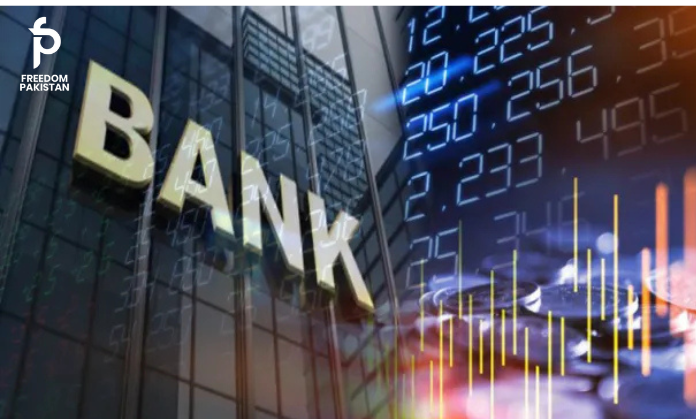The Federal Budget 2025–26 draws strong support from Pakistan’s banking sector, which views it as a vital step toward inclusive economic progress and macroeconomic steadiness. Institutions from Meezan to HBL herald the government’s fiscal reform package as responsive to key development needs—particularly regional inclusion, private-sector expansion, and credit-market resilience. This article explores the budget’s core elements, the banking industry’s positive reception, and how this alignment may help propel the country toward sustained growth.
Introduction
On 10 June 2025, Finance Minister Muhammad Aurangzeb introduced the Rs 17.57 trillion Federal Budget, targeting 4.2 percent GDP growth and narrowing the fiscal deficit to 3.9 percent of GDP. Immediate reactions underscored the banking sector’s role in implementing fiscal reforms, structuring financing for both public infrastructure and private consumption, and supporting the IMF-backed economic turnaround. This article delves into how and why Pakistan’s banks have rallied behind the budget and the tangible implications for inclusive growth and stability.
Highlights of the Federal Budget 2025–26
-
Budget outlay: Rs 17.57 trillion, a moderate 7 percent reduction from the previous year.
-
Growth & Inflation forecasts: GDP growth at 4.2 percent and inflation pegged at 7.5 percent .
-
Fiscal deficit: Targeted at 3.9 percent of GDP, down from 5.9 percent.
-
Tax revenue goals: A bold FBR collection target of Rs 14.13 trillion, an 18.7 percent increase.
-
Defence & pensions: Defence allocation hikes by 20 percent with pensions rising accordingly .
-
Public sector development: PSDP stands at Rs 1 trillion, aiming to spur infrastructure, energy, and communication.
-
Tax and subsidy reforms: Expansion of the tax base across agriculture, retail, real estate; removal of multiple exemptions; digitization of tax administration.
-
Macroeconomic adjustments: Interest rate cuts from 22 percent to 11 percent have relieved borrowing costs .
-
Adult bank account ownership surged from just 16% in 2015 to 64% in 2023.
-
Women’s account penetration improved from 23% to 47% in the same period.
-
Depositors grew from 54 million to 88 million over five years
Banking Sector’s Response
A. Leadership and Public Endorsements
At the February Banking Summit in Karachi, chaired by PBA’s Zafar Masud, the sector projected strong backing for the budget’s reform trajectory. Masud emphasized the banks’ pivotal role:
“Banks have financed 99.8 percent of the government’s budget deficit… yet 74 percent of private‑sector lending flows to large corporates, while just 5 percent reaches SMEs”.
Such comments reflect a growing consensus among financiers that macro reforms must be matched with broader lending outreach.
B. Supportive Strategic Alignment
Banks welcomed the emphasis on expanding the tax base, digital governance, and credit financing for infrastructure—a priority reflected in reduced stock reliance on interest income and taxes on interest raised from 15 percent to 20 percent . Institutions like Meezan Bank, HBL, NBP, and UBL are active in government debt refinancing and circular debt relief, especially in the power sector.
C. Collaboration Over Circular Debt
Notably, on 20 June 2025, Pakistan secured Rs 1.275 trillion in Islamic financing from 18 commercial banks—including major players—for resolving power-sector circular debt. The facility carries a concessional benchmark tied to the 3‑month KIBOR minus 0.9 percent, with no increase in public debt.
Budget Measures That Boost the Banking Sector
1. Credit Focused Reforms
-
Advance-to-deposit ratio: While earlier ADR-linked tax policies prompted future reforms, the budget signals a shift to incentivize active lending.
-
SME financing: The finance minister emphasized diversion of credit to SMEs, moving beyond collateral-based lending.
-
Sector loans: Zero-markup loans approved for strategic sectors under the revamped PSDP.
2. Digital Banking Push
-
eKYC initiative: Launched to streamline customer onboarding and widen financial inclusion.
-
Raast QR expansion: Over 800,000 merchants onboarded with a target of two million by year-end.
-
Digital tax-compliance: AI-powered audits and e-invoicing push encourages electronic transactions, bolstering digital lending adoption.
-
Mobile banking users jumped from 16 million in FY2023 to 18.7 million in FY2024; internet banking users climbed from 9.6 million to 12 million.
-
POS terminals increased from 104,865 to 125,593; ATMs rose from 17,133 to 18,957.
-
Raast processed over 102 million person-to-person transactions in 2023, with 39.5 million registered IDs.
3. Tax & Regulatory Adjustments
-
Interest income tax hike: From 15 percent to 20 percent—banks view this as manageable compared to potential ADR-based penalties.
-
Non‑filers’ cash withdrawal tax: Increased from 0.6 percent to 0.8 percent on withdrawals > Rs 50,000 to promote compliance.
-
Provision expense disallowance: Bank provisions now taxed, boosting transparency but raising costs.
Promoting Inclusive Growth
A. Microfinance & SME Uplift
Although banks still channel 74 percent of private lending to large corporates, the budget’s greenlighting of zero-markup industrial loans and explicit SME lines signals a strategic pivot . SBP Governor Jameel Ahmad stressed that deepening private credit is vital, introducing:
“Banks need to diversify… no country can achieve sustainable economic growth with low levels of private credit”.
B. Outreach to Unbanked & Rural Communities
-
Accounts expanded: Bank account coverage rose from 47 percent to 64 percent of adults since 2018, with the gender gap narrowing—aiming for 75 percent coverage by 2028.
-
Agri subsidies & Kissan cards: Budget support for subsidized tube wells and solar irrigation encourages agriculture to tap into formal financial systems.
C. Financial Literacy & Consumer Relief
-
Tax breaks for salaried class: Lower brackets and simplified filing systems ease burdens on the middle class.
-
Housing finance subsidies: Budget provision for subsidized loans for 200,000 homes supports the housing finance market.
Strengthening Economic Stability
1. Domestic Resource Mobilization
Banks are essential for mobilizing domestic savings and investments. The budget’s digital integrations and tax reforms encourage financial deepening. Revenue targets remain lofty, with analysts expressing caution that they may fall short without lasting structural change .
2. Managing Inflation & Interest Rates
Lower policy rates—from 22 percent to 11 percent—ease credit demand and reduce servicing costs on public debt, reinforcing financial stability. Banks anticipate lending opportunities even as they absorb impact of interest-income tax hikes.
3. Debt & Fiscal Sustainability
Banks hold significant government debt. The Islamic refinancing facility for power-sector liabilities and banks’ heavy investment in government instruments underscore cooperation in managing fiscal liabilities without inflating debt.
Challenges and Cautions
A. High Expectations on Revenue
The ambitious tax‑collection and revenue targets—such as bringing agriculture into the tax net—are forecasters suspect are overly optimistic . Missed targets could constrain bank-led growth initiatives.
B. Inflation and Cost Pressures
With inflation around 7.5 percent and fiscal tightening ongoing, banks are wary about real lending rates and cost structures. Moreover, disallowance of provision expenses may impact profits by 2–10 percent for 55–65 percent effective tax rates.
C. Non-Performing Loans (NPLs)
Banks are taking on higher provisioning risk, especially with loan expansion into SMEs and vulnerable sectors. Strengthening risk management will be vital.
D. Governance & Reform Speed
While embracing digitization and transparency, real implementation—as seen in tax base broadening and structural reforms—has faced delays . Persistent inertia could undercut financial deepening
Private Sector Lending & ADR
-
Private-sector credit fell to 12% of GDP in 2023, down from 15% in 2022; in contrast, Bangladesh and India recorded ~38% and ~50% respectively.
-
Banks held 96% of deposits (Rs 29 trillion) in government loans as of December 2024—only 4% went to private-sector credit. Advance-to-Deposit ratio dropped to 38% in August 2024, rising later to around 50% by December .
SME & Microfinance Advocacy
-
Nearly 5 million SMEs exist in Pakistan (making up 80% of non-agriculture labour and 40% of GDP), yet just 3–6% access bank credi.
-
SBP aims to double SME financing to Rs 1.1 trillion by 2029, a Rs 100 billion increase expected in FY25.
-
PBA is developing an SME index to better monitor and tailor SME credit; this index will be updated biannually.
Microfinance Resilience Project
-
The World Bank approved US $102 million for Pakistan’s “Resilient and Accessible Microfinance (RAM)” Project to support 1.89 million vulnerable households with climate-resilient microcredit.
-
Microfinance institutions will benefit from a Climate Risk Fund and agri-tech investments to strengthen rural access.
Islamic Banking Surge
-
Islamic banking now accounts for 23% of deposits, 19% of assets, and 29% of branch networks in the banking sector.
-
Sukuk holdings have been a key driver for growth—25%+ of deposits are routed through Islamic banks .
-
Pakistan is aiming for a fully Islamic banking system by 2028, a unique global ambition.
Digital-Only Banking & Fintech
-
SBP has issued five digital-banking licenses, including to Easypaisa Bank, the first full-fledged digital bank (license granted Jan 2025).
- The transition to eKYC and expanded branchless banking—with over 666,000 agents—catalyzes outreach into underserved communities.
Conclusion
The Bank sector’s backing of the 2025–26 Federal Budget crystallizes a shared determination to advance inclusive growth and macroeconomic stability. Through structured digital reforms, targeted lending, and fiscal discipline—partnered with major public‑private cooperation in refinancing circular debt—banks position themselves as growth enablers.
However, the success of this alignment hinges on consistent implementation, effective risk outcomes, and sustained reform momentum. If macro targets of 3.9 percent fiscal deficit and 14 trillion rupee tax are met, the combined engine of government and financial institutions could raise Pakistan onto a stable, inclusive growth trajectory.




